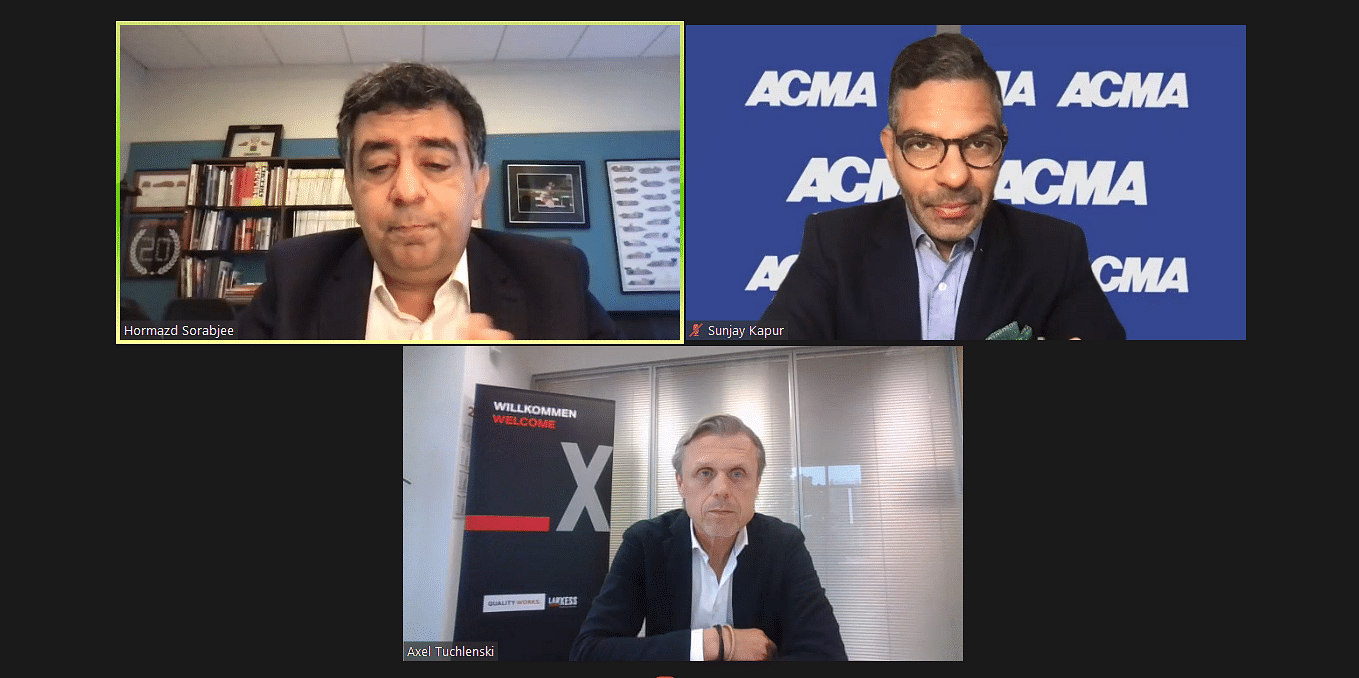EV Forum: Auto Inc calls for innovation coupled with cost efficiency and safety
Dynamics of electric two-wheeler and passenger vehicles are very different. Captains of industry deliberate on the need for focussed innovation.
“The supply chain is improving over the years. With technology and joint ventures, the Tier 1 is well oiled but Tier 2 and 3 is still a challenge due to fragmentation,” said, Sunjay Kapur, Chairman, Sona Comstar.
Kapur, who is also president of ACMA, was speaking on day three of the EV Forum organised by Autocar Professional in a panel discussion on ‘Innovation in electric mobility space’.
The last day of the EV Forum was also about 'Celebrating Innovations Day with Lanxess', the leading specialty chemicals company.
The star-studded panel also included Dr Axel Tuchlenski, Head of Global Product and Application Development, HPM Business, Lanxess GmbH. The discussion was moderated by Hormazd Sorabjee, Editor, Autocar India.
“Therefore, there is insistence from OEMs to invest in technology and JVs in tier II, III and workforce skilling. With EVs we are still at early stages. Dynamics of electric two-wheeler and passenger vehicles are very different. We need investment in manpower and skilling geared to handle EV dynamics. Also, batteries are a big challenge with respect to scale for EVs,” Kapur added.

Incentives and innovation in EVs
Dr Tuchlenski said that they are seeing a lot of innovation in the EV space. He pointed out that everything is changing so fast within a short period of time. “The business model, owning a car, everything is changing now and it is becoming more interesting. Also, there will be different types of powertrains in the EV. Flexibility is the key,” he stated.
Adding to his points, the chairman of Sona Comstar asserted that there is also a lot of push from the government like FAME, PLI scheme. Also, there is a lot of push for localisation of manufacturing of EVs and future technologies. He mentioned that this is a step in the right direction and these schemes will incentivise manufacturers too.
Cost-sensitive India
Speaking about the price sensitive market in India, Kapur said, “Cost, efficiency and safety will determine who will win the race in the component industry in India. Lightweighting is not new to the Indian component industry and it brings down component cost. We have been working on it since ICE days. And, now we are working with new materials and there are research underway in engineering too.”
Adding to what Kapur said, Dr Tuchlenski stated that high performance of material adds value than cost. “At the end we always look at the efficiency of the products. We believe with the transition to electric mobility, the industry needs more engineering plastics. We also believe the demand for engineering plastics will grow and invite industry to collaborate with us to develop new solutions. Even in the autonomous driving system, we believe that plastic will grow.”
“In the long run, technology innovation will always win. But the transition to e-mobility is so costly, you just have to take a strategic decision and go along the way. We will head for different mobility concepts,” Dr Tuchlenski said.
“There are multiple challenges in the industry,” Kapur pointed out, adding that the auto industry buys only 7 percent output of the semiconductors and the rest of the capacity gets diverted to other industries.
“Creating capacity is expensive (US$3 billion) and takes time. But it’s a great opportunity to begin chip manufacturing. Also, demand creation for EVs will happen and it happens in different ways across countries. Affordability is a key driver for demand and not subsidies. We have seen examples of demand post the first lockdown,” he explained.
He also pointed out that the EV motor industry is extremely disruptive, and a lot of development is going on in this space. He sees plenty of opportunities for the two-wheeler market in India which will move to electrification quickly. “All are sub 100 kV motors and it will be easy to manage. The biggest challenge is in the four- wheeler segment as the motors are different there,” he stated.
Dr Axel Tuchlenski agreed with Kapur stating that, “You need to invest in EV infrastructure and fast-charging tech to get the momentum.”
RELATED ARTICLES
Cosmo First diversifies into paint protection film and ceramic coatings
The Aurangabad, Maharashtra-based packaging materials supplier is leveraging its competencies in plastic films and speci...
JSW MG Motor India confident of selling 1,000 M9 electric MPVs in first year
The 5.2-metre-long, seven-seater luxury electric MPV, which will be locally assembled at the Halol plant in Gujarat, wil...
Modern Automotives targets 25% CAGR in forged components by FY2031, diversifies into e-3Ws
The Tier-1 component supplier of forged components such as connecting rods, crankshafts, tie-rods, and fork bridges to l...






 24 Sep 2021
24 Sep 2021
 4072 Views
4072 Views





 Autocar Professional Bureau
Autocar Professional Bureau




